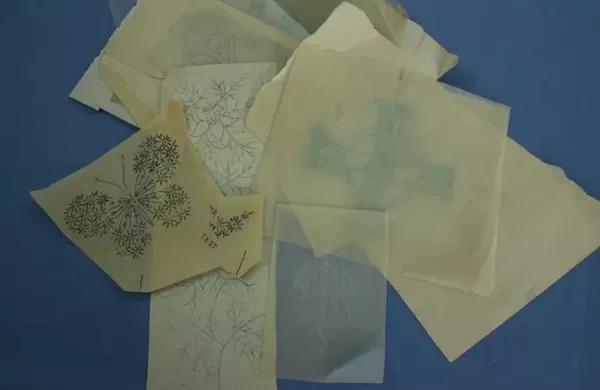
A collection of historic designs on aged paper dating from the 1870s to around 1940 and beyond. The collection includes original works by renowned designers from the Gothic age spanning the last two centuries, including perforated designs and transfers sourced from an antique Thomas Brown and Sons catalog. The designs are currently undergoing verification after a thorough historical tracing. It’s important to document and preserve this collection for future generations as a valuable resource for study and learning.
Like this:
Like Loading...
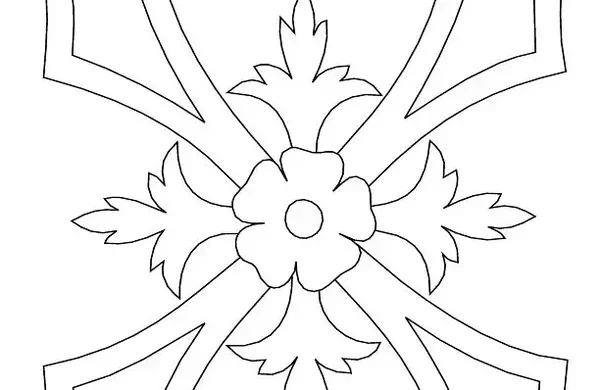
Vintage ecclesiastical embroidery patterns, mostly 100+ years old, delicate on aged paper. Fragile and creased, the paper poses challenges for fabric transfer; the slightest touch risks damage. Despite their impracticality in original condition, efforts are made to add new life. The best solution involves creating clean versions through scanning the original design, though it’s a challenging process.
Like this:
Like Loading...

Collection of vintage Ecclesiastical Embroidery Designs, Drawings, and Patterns.
– The collection dates from the 1870s, and includes a wide variety of items, both in terms of content and quality, as well as size. The process of identifying the designs in the collection will take months. So, let us wait for the entire collection of Ecclesiastical Hand Embroidery Patterns to be cataloged.
Like this:
Like Loading...
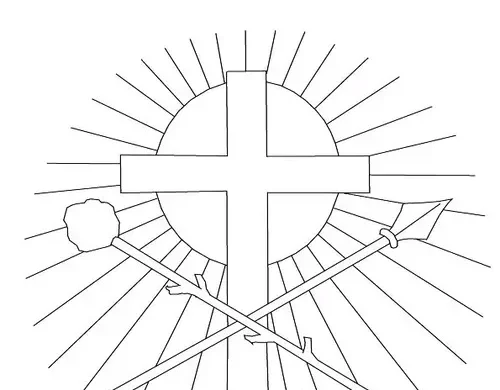
This treasure comes from a rare copy of a German book that arrived over the Christmas Holidays. The original design is very small. When it is enlarged on a copier, the design loses definition and the pixels become an issue. This seemed appropriate as a first challenge with the graphics program. Lots of straight lines, a circle, and a few wavy lines for rocks.
Like this:
Like Loading...
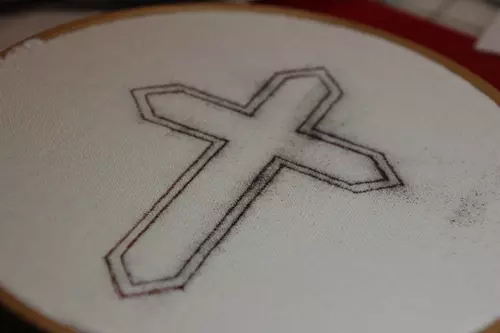
Creating Chalice Veil Cross in 20 minutes.
– The Design for the Chalice Veil Passion Cross is small. There was a tiny scrap of linen, washed and pressed, and with the right size, along with a piece of Kona Cotton to use as a backing. This was the perfect project for a small round hoop.
Like this:
Like Loading...
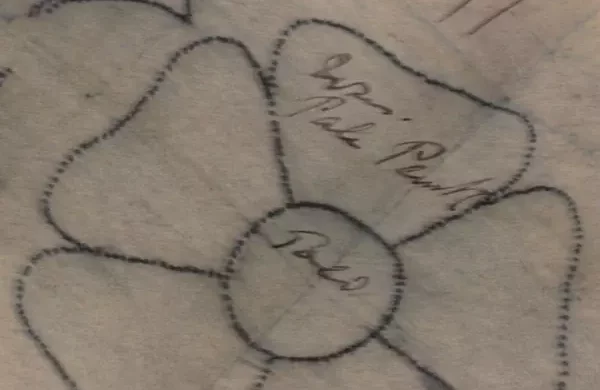
The Monastery’s Ecclesiastical Embroidery Designs are truly amazing. What stands out is that many of these beautiful designs originated from understanding of geometry, design, scale and proportion. The Sisters, who created these designs, studied theology, understood the history and meaning behind symbols, and skillfully combined all this knowledge to create stunning Ecclesiastical Designs.
Like this:
Like Loading...

Passionate about Ecclesiastical Embroidery, I’ve collected rare books and found a rare to find book by Mary Barber entitled Some Drawings of Ancient Embroidery and received three sample designs from a closing monastery’s Art Needlework Department. The designs, featuring a Rose and Thorn, IHC, and Sword and Keys, offer a glimpse into the artistry of Ecclesiastical Embroidery.
Like this:
Like Loading...
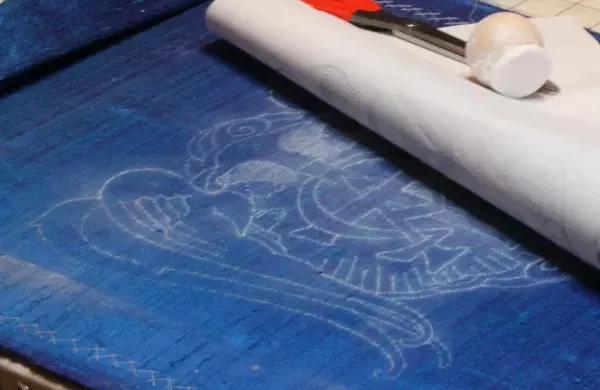
This Advent Vestment set is designed for a shorter lifespan, around 5 to 15 years. The construction process allows for quicker techniques, like using fusible web for the appliqué. Appliqué parts, cut from Silk Dupioni and a cotton/linen blend for the flesh tones, are ironed in place for easy and accurate positioning. The traced design on the blue silk aids in precise placement. While traditional methods may have used homemade paste, the use of fusible web aligns with the project’s practical goals.
Like this:
Like Loading...

In Ecclesiastical Sewing projects, planning ahead – For the IHS Goldwork Design on Rose Vestments, new techniques are being considered. One option involves cutting IHS letters from card and padding with gold wire thread. Getting accurate shapes was a challenge, but found Pellon Clear Fuse, which worked well for tracing the letters onto card padding.
Like this:
Like Loading...

Discovering hidden treasures in vintage Ecclesiastical Embroidery transfers is always exciting. While exploring a worn book, unexpected finds emerged, including a small iron-on transfer suitable for stole ends or whitework on Church Linens. Moreover, a larger transfer sheet with four designs, and another long and narrow design, provided valuable resources for enhancing Ecclesiastical Embroidery projects.
Like this:
Like Loading...
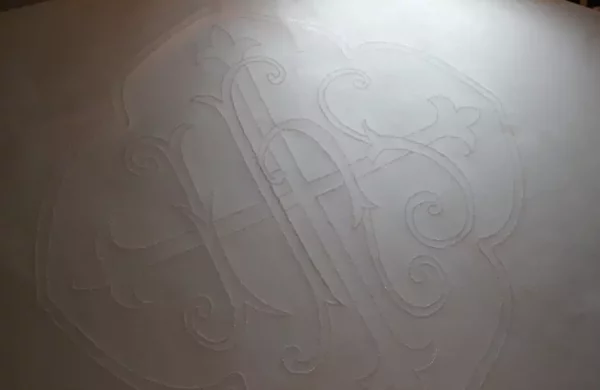
Discovering Tracing Vellum, a perfect solution for Ecclesiastical Embroidery Pattern transfers. This paper, resembling that used by Sisters in the past, is ideal for tracing designs onto fabric. Its smoother texture and availability on Amazon make it a valuable find for preserving and continuing the art of Ecclesiastical Embroidery. The newfound treasure proved effective in transferring the IHS Ecclesiastical Embroidery Design to Silk Dupioni.
Like this:
Like Loading...
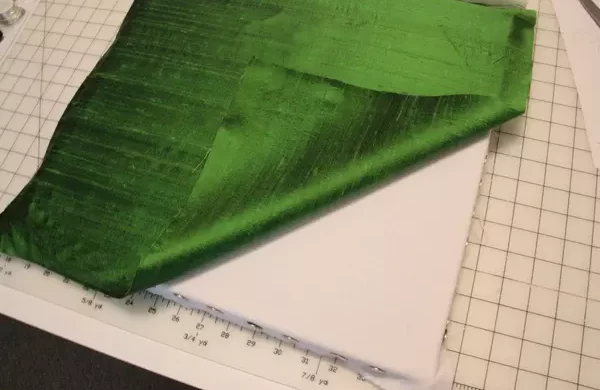
Beginning the IHS Embroidery design project after a weekend of preparations. Silk Dupioni and Alba Maxima linen framed up, with the Evertite Frame chosen despite size constraints. Aligning and stretching the silk carefully, the design is transferred using a homemade charcoal and blue quilt pounce mixture. Success in the transfer marks the start of drawing lines and initiating the first stitches in this Ecclesiastical Embroidery Design.
Like this:
Like Loading...

Working on a design for the Rose Vestment Set, specifically for Gaudete Sunday and Laetare Sunday. The IHS Ecclesiastical Embroidery pattern is simple yet elegant, featuring the symbolic IHS with a cross, framed by quatrefoil designs. The meticulous transfer process is underway, using a homemade pricker and pounce method. Looking forward to the stitching phase and hoping this pattern adds beauty to Rose Vestments in worship.
Like this:
Like Loading...

Preparing to transfer Ecclesiastical Embroidery patterns on white fabric. Testing blue quilt pounce for clear, washable lines. Pouncing carefully to avoid powder loss. Tracing with General’s pastel chalk, Paper Mate Flair, and Stabilo pens for comparison. Learning as we go for optimal results. Stay tuned for the next steps!
Like this:
Like Loading...

Testing transfer methods for whitework embroidery. Experimenting with blue quilt pounce powder on linens. Trying a gray pastel pencil for clean lines. Seeking a washable solution to prevent discoloration. Updates coming soon!
Like this:
Like Loading...
















You must be logged in to post a comment.